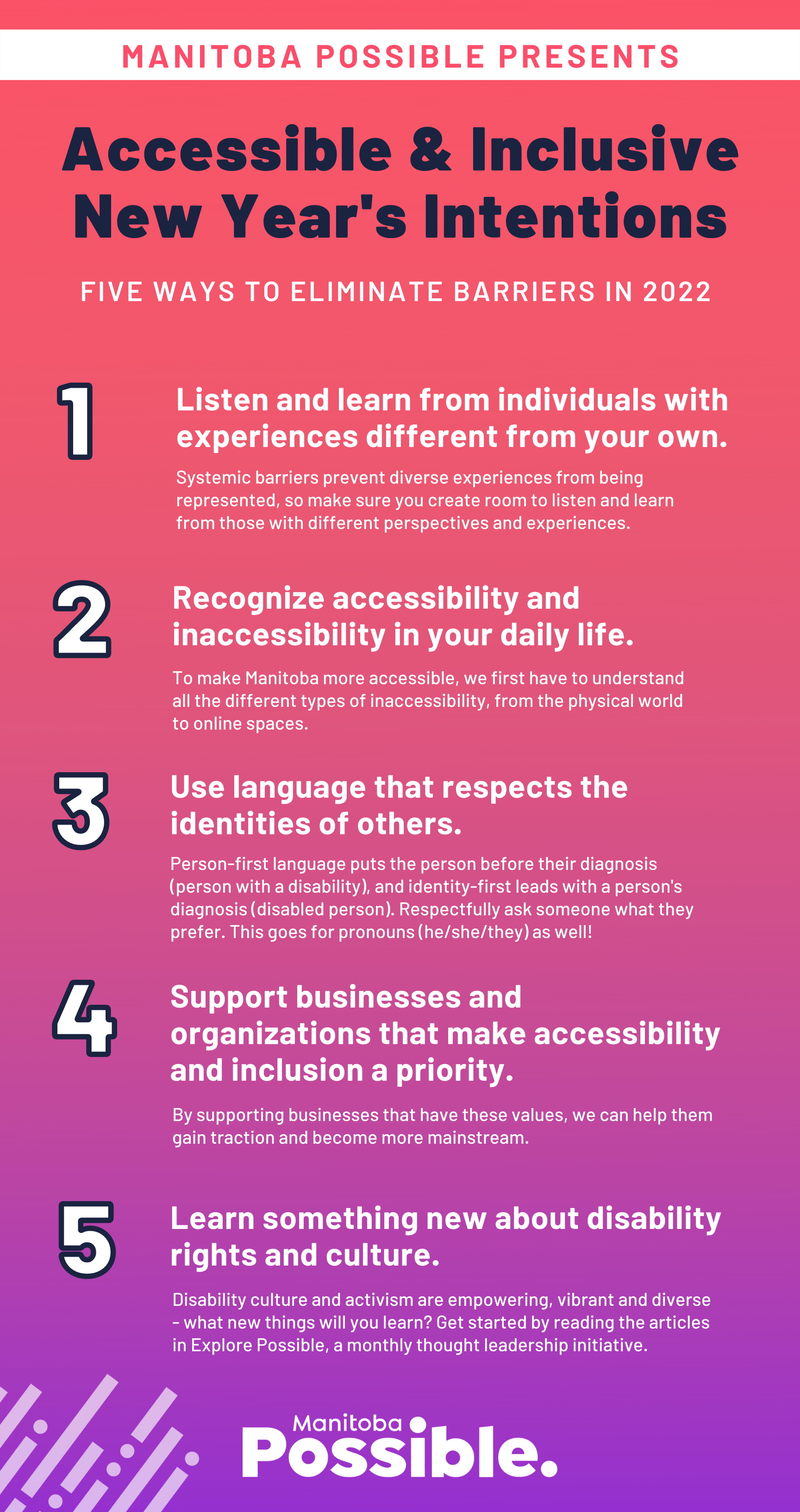5 Accessible and Inclusive New Year’s Intentions for 2022
It’s 2022 and time to set our intentions for the year ahead. How can we embrace inclusion and accessibility and break down barriers this year?
Whether you have a lived experience with disability or are looking to expand your knowledge of diverse experiences and perspectives, these accessible and inclusive intentions will guide you down a path of greater understanding. Let’s get started!
Listen and learn from individuals with experiences different from your own.
Make sure that you are listening to individuals with diverse experiences and allowing them to have a space at the table, wherever that table may be - at home, in the office, or in public. This could be in almost any area, from policymaking to the media and the arts to after-school sports. Are the groups you belong to accessible to everyone? How can you eliminate any accessibility barriers that exist? Make room for everyone in your leadership group, art project, clubs and everywhere else!
2. Recognize accessibility and inaccessibility in your daily life.
To make Manitoba more accessible, we first have to understand what inaccessibility means and all the different ways in which that can manifest, from the physical world to online spaces. While the Internet has been incredibly useful since the start of the pandemic for continuing business as usual, there are many digital spaces that are not as accessible as they could be.
Make sure your website, emails and social posts are screen reader friendly and use ALT text or image descriptions. Getting in touch online is most people’s preference these days, but make sure you offer non-digital ways for people to get in touch too.
3. Use language that respects the identities of others.
There is a difference in perspectives in the disability community about which language to use - person-first or identity-first. Person-first is language that puts the person before their diagnosis (person with a disability). Identity-first is language that leads with a person’s diagnosis (disabled person). The best thing to do is ask someone how they prefer to be referred to. This also applies to pronouns like he/she/they as well!
4. Support businesses and organizations that make accessibility and inclusion a priority
The best way to “vote” is with your dollars or time, so make sure to support businesses and organizations that make accessibility, inclusion and diversity a priority both internally and externally. By supporting these values, we can help them gain traction and become more mainstream.
5. Learn something new about disability rights and culture.
Diversifying your knowledge base to include experiences other than your own will expand your world. Disability culture and activism are empowering, vibrant and diverse. What new things can you learn by seeking out trusted sources and those with lived experience? Start by reading some stories about people in our community on Explore Possible, a monthly thought leadership initiative.
The past two years have highlighted many inaccessibility and not inclusive aspects of society. What will we accomplish this year, together? We can’t wait to find out! Let us know about your accessible and inclusive intentions on Facebook, Twitter, Instagram or TikTok.

